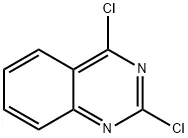
- +86-13363869198
- weimiaohb@126.com

Oct . 19, 2024 08:02 Back to list
lidocaine hydrochloride cas 73-78-9
Lidocaine Hydrochloride An In-Depth Look at Its Uses, Mechanism, and Safety
Lidocaine hydrochloride, known by its chemical formula C14H22ClN2O and CAS number 73-78-9, is a widely used local anesthetic and antiarrhythmic agent. It is part of the amide-type local anesthetics and plays a crucial role in both medical and dental practices. This article explores its various applications, mechanisms of action, and safety considerations.
Pharmacological Properties
Lidocaine acts primarily by blocking sodium channels in the neuronal cell membrane, leading to a decrease in nerve impulses. This property makes it effective for local anesthesia, as it inhibits the sensation of pain in specific body areas. It exhibits rapid onset and intermediate duration of action, making it suitable for various procedures, including surgical interventions and pain management.
Clinical Applications
1. Local Anesthesia Lidocaine is primarily known for its use in local anesthesia. It is frequently administered via injection for minor surgical procedures, dental work, and to manage acute pain. The onset of anesthesia typically occurs within minutes, allowing for immediate patient comfort.
2. Topical Anesthetic In its topical form, lidocaine is used to relieve pain or discomfort caused by conditions such as sunburn, insect bites, or sore throats. It can be applied to the skin or mucous membranes, providing localized relief without the need for injections.
3. Antiarrhythmic Agent Apart from its anesthetic capabilities, lidocaine is utilized in the treatment of certain arrhythmias, particularly ventricular arrhythmias. It is administered intravenously in emergency settings, where it stabilizes cardiac membranes and restores normal heart rhythm.
4. Chronic Pain Management Lidocaine is also increasingly used in managing chronic pain conditions, including neuropathic pain and postherpetic neuralgia. It can be delivered via transdermal patches, providing a continuous supply of medication directly to the painful area.
lidocaine hydrochloride cas 73-78-9

Mechanism of Action
Lidocaine's primary mechanism involves blocking voltage-gated sodium channels, which are crucial for the propagation of action potentials in neurons. By inhibiting these channels, lidocaine prevents the influx of sodium ions, ultimately leading to a decreased ability to transmit pain signals. The blockade of nerve conduction is both dose-dependent and reversible, allowing for controlled and temporary loss of sensation.
Dosage and Administration
The dosage of lidocaine varies depending on the intended use and the patient's condition. Injections are typically administered by healthcare professionals, while topical formulations can be used by patients at home. It is essential to adhere to recommended dosages to minimize the risk of toxicity, which can occur with excessive amounts.
Safety and Side Effects
While lidocaine is generally considered safe when used as directed, it is not without potential side effects. Common side effects may include temporary redness or swelling at the injection site, dizziness, and nausea. More severe adverse reactions can occur, such as allergic reactions, cardiac arrhythmias, or central nervous system toxicity, which may present as seizures or confusion. Therefore, monitoring is crucial, particularly in vulnerable populations such as infants and the elderly.
Conclusion
Lidocaine hydrochloride, with its extensive applications in anesthesia and arrhythmia management, remains a cornerstone in modern medicine. Its effectiveness, combined with a well-understood mechanism of action and manageable side effects, underscores its significance in medical practice. As research continues to explore new applications and formulations, lidocaine is poised to maintain its critical role in patient care for years to come.
-
Premium Pharma Intermediates | AI-Optimized Synthesis
NewsAug.03,2025
-
GS-441524 White Liquid Production for Factories | AI-Optimized
NewsAug.02,2025
-
AI-Optimized CAS: 79099-07-3 Factories for High Yield
NewsAug.01,2025
-
Premium CAS 1451-83-8 Factory with GPT-4 Turbo | AI-Optimized
NewsJul.31,2025
-
Pharmaceutical Intermediates - AI-Optimized Synthesis & Purity
NewsJul.31,2025
-
Top CAS: 79099-07-3 Factories & Wholesale Supplier from China
NewsJul.30,2025